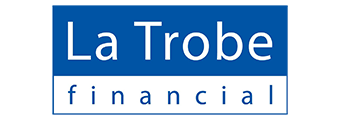The Great Australian Dream is open to all - even casual workers. While some lenders may consider casual employees riskier borrowers than those with a regular 9-5, there are still opportunities for casual workers to take out a mortgage and purchase their own properties.
Figures from the Australian Bureau of Statistics (ABS) shows there were around 2.5 million casual workers in Australia as of August 2024 - representing around a fifth of all employees. Casual work takes many different forms but generally, casual employees are:
- Not guaranteed regular hours of work
- Not eligible for paid leave
- Can be terminated from their jobs without notice
This can understandably make some lenders reluctant to lend.
However, some casuals may have regular hours but have simply never been offered a permanent role. Others may have worked for an employer for some time but choose to remain a casual employee for greater flexibility and a higher pay rate.
So, if you are a casual worker aspiring to own your own home, don’t be daunted by the prospect of finding a home loan. Here’s a useful guide to help you apply for a home loan as a casual worker and give you the best chance of receiving a lender’s stamp of approval.
What type of home loans can casual workers apply for?
Casual workers are generally eligible for regular home loans, particularly if they have stable income, a guarantor, or they're in a relatively strong financial position. A good credit rating can also boost the chances of qualifying for a mortgage.
A low doc (standing for low documentation) home loan could also be a good avenue for a casual worker seeking a home loan. These are specialty mortgages designed for people who may not be able to provide two years of tax returns or other financial records showing stable income as required for traditional home loans.
Low doc home loans generally offer flexibility for borrowers who may not have regular income streams. While applications still require proof of income, lenders will generally consider individual circumstances and alternative proof-of-income documents.
However, low doc loans are typically subject to higher interest rates, as they're often considered riskier than regular loans.
Lenders that offer low doc home loans
The table below features some of the lowest-rate low doc home loans on the market right now.
| Lender | Home Loan | Interest Rate | Comparison Rate* | Monthly Repayment | Repayment type | Rate Type | Offset | Redraw | Ongoing Fees | Upfront Fees | Max LVR | Lump Sum Repayment | Extra Repayments | Split Loan Option | Tags | Features | Link | Compare | Promoted Product | Disclosure |
|---|---|---|---|---|---|---|---|---|---|---|---|---|---|---|---|---|---|---|---|---|
6.59% p.a. | 6.77% p.a. | $3,190 | Principal & Interest | Variable | $10 | $1,325 | 80% | |||||||||||||
6.49% p.a. | 6.75% p.a. | $3,157 | Principal & Interest | Variable | $0 | $995 | 70% | |||||||||||||
6.29% p.a. | 6.57% p.a. | $3,092 | Principal & Interest | Variable | $295 | $0 | 85% |
How much can casual workers borrow?
Like any other borrower, the amount a casual worker can borrow will largely depend on their income. Though, some lenders may not consider 100% of non-guaranteed income, like overtime earnings or bonuses, in their income assessments.
Another aspect that can impact a casual worker's borrowing power is the size of the deposit a lender may ask for.
While you may be able to purchase a home with as little as 10% deposit - the same as other borrowers - some lenders may demand casual workers have lower loan-to-value ratios (LVR). In practical terms, this means you may need to have a larger deposit to qualify for the loan.
As a general rule of thumb: aim to borrow 80% or less of the total home value. This will also help you avoid paying Lenders Mortgage Insurance (LMI) - an insurance a borrower may need to pay on behalf of the lender in case they're unable to meet their loan repayments. This can add considerably to the cost of your loan.
How do lenders assess casual workers' home loan applications?
While most lenders will require that you've worked at your current position for at least one year, others may be more flexible and will accept six, or even three, months at your present employment. This is especially likely to be the case if you've worked in your industry for a long time or your job is in high demand.
Depending on the lender, casual workers may also be required to prove they are working regularly by providing evidence of their hours, income, and previous earnings. It is wise to have such documentation prepared before you apply for your home loan.
In assessing your capacity to meet monthly mortgage repayments, some lenders may use your lowest annual income in the last two years to determine how much you can borrow. If you’re yet to work a year in your current position, some lenders may use your year-to-date gross income to project what your annual income will be.
Some lenders may also ‘annualise’ the income of casual workers. This can apply to casual teachers, for example, who get paid for the 40 weeks they work during the school year but not for school holidays. How casual income is assessed differs between lenders.
Is it easy for casual workers to apply for a home loan?
There are a number of products catering for different employment models on home loan market. These are specifically designed for borrowers with irregular employment, covering freelancers, self-employed contractors, as well as those with permanent casual positions.
This gives casually employed borrowers some options to consider and a degree of flexibility in negotiating with lenders about the terms and conditions that will work best for their situation.
What are some of the disadvantages casual workers face in applying for a home loan?
While not always the case, lenders sometimes regard casual workers as higher risk borrowers. Unfortunately, this can mean they may face higher loan fees and interest rates than those charged to traditional wage or salary earners.
Another downside is the need to be very specific in submitting your income to your lender. You may need to seek the services of an accountant to help you meet proof of income requirements. Some lenders may even want to contact your accountant directly to verify your income.
Some lenders may also require a letter from an employer or employment agency outlining your current employment and how long it is expected to last.
Tips in applying for a home loan under casual employment
Organise your documents
It always pays to have your documents in order. Research what documentation is likely to be required by lenders and have it prepared before you begin the application process.
Optimise your credit score
A good credit rating can significantly boost your chances of securing a home loan, particularly as a casual worker. There are several ways to increase your credit score before you apply for a loan. The first is to reduce or pay off any existing debt. It pays to review and address your current financial commitments before applying to take on another one.
Compare interest rates
Be mindful of jumping the gun without researching what’s available on the market, especially in terms of interest rates. Be clear about what mortgage products are likely to be available to you and choose one that best meets your specific needs. If there are opportunities to seek a reduction or discount on any fees or charges, never hesitate to ask. You should also consider whether you're best suited to a variable or a fixed-rate mortgage.
Keep in mind the fees associated with the loan
Loans for casual workers may come with additional fees and costs. Make provision for them in the cost of establishing your home loan and always ask what specific fees are for.
Seek professional advice
Mortgage brokers may be able to assist you in finding the right mortgage product for your purposes. They generally have access to a wide range of lenders as well as specialist knowledge of what products are available on the market to meet suit circumstances. Most brokers earn commissions from lenders, meaning there is generally no direct cost to you for their services.
Photo by Ian Harber on Unsplash
First published in April 2024
Collections: Home Loan Application Buying a home






Share